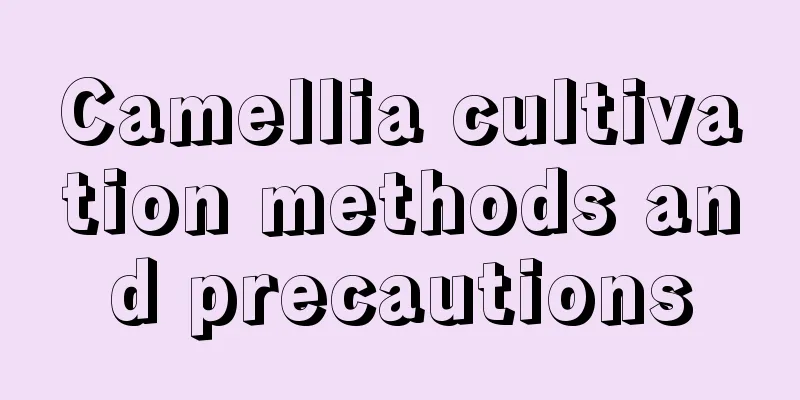Camellia cultivation methods and precautions

1. SoilPotting soil is important to the growth of camellia, so you need to be cautious when choosing the soil. Usually, it is mainly composed of soil with high humus content and slightly acidic content, which can meet its soil needs. 2. TemperatureCamellia is afraid of both high and low temperatures, so the best temperature is between 18 and 25 degrees. If the temperature is too high or too low, it will affect its growth, especially in winter. It should be moved back into the room for maintenance. When there is sunshine at noon, it can be moved to the balcony. In summer, avoid excessive exposure to the sun and high temperatures. 3. WateringCamellia likes a humid place, so water is very important to it, but make sure to water it in moderation, not too dry or too wet, otherwise it will affect root growth. If it is summer, you can water it more to facilitate its growth. If it is winter, you need to reduce the amount of watering and water it once every 2 to 3 days to prevent frost damage. 4. FertilizationCamellia likes fertilizer, so when caring for it, the amount of fertilizer must be sufficient, especially during the growing season. In addition to adding fertilizers that are beneficial to growth, phosphorus fertilizers must also be added to promote brighter flowers in the later stage. But remember not to apply too much fertilizer, otherwise it will affect the growth of the roots. 5. RegularPruning is also very important in maintenance. When there are too many flower buds, regular pruning is required to cut off the weak branches and arrange the flower buds. This will help it absorb nutrients better. 6. Pests and diseasesCamellia is very easy to breed diseases and pests, the most common of which is black mold, which is extremely harmful to the plant. Therefore, it is necessary to spray it with some medicine during the period when it is susceptible to diseases and pests to prevent disease and pest attack, so as to facilitate its better growth. |
>>: Cultivation methods and precautions of azalea
Recommend
When is the best time to transplant Wutacai (transplanting time and method of Wutacai)
Wutacai is also called tacai, but because its lea...
Jacaranda's growing environment and local conditions
Jacaranda Growth Environment and Conditions Jacar...
Differences between Oxalis and Alfalfa
1. Different varieties Oxalis belongs to the Oxal...
How to prevent and treat rheumatism in dairy cows?
Rheumatism in dairy cows is also known as arthrit...
What is the latest month to plant cucumbers?
Cucumber is a common melon vegetable and can be g...
How to water the dragon blood tree
1. Watering method It is a tropical plant and has...
What to do if lemon leaves turn yellow
1. Supplement iron or nitrogen (1) Specific reaso...
Morel yield and profit per mu
Morels are rich in amino acids and multiple vitam...
How to prune yew
When to prune yew Yew trees can generally be prun...
What is millet?
What kind of crop is millet Ji refers to a kind o...
Taboos of raising Tillandsia in winter
Temperature should be controlled Tillandsia is a ...
What flowers can use compound fertilizer
1. What flowers can be used In daily life, compou...
How to remove creeper, does it shed leaves outdoors in winter?
1. Removal method 1. With the help of drugs: To r...
Cultivation methods and precautions of Dracaena
1. Breeding methods 1. Soil: It prefers loose and...
Feilong repotting time
1. Time to change pots For dragon plants, the tim...









